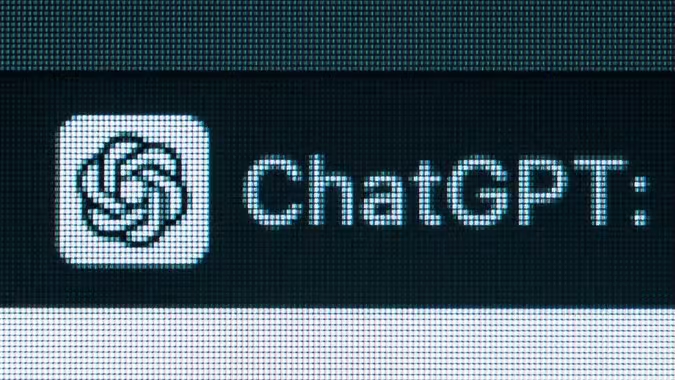What is ChatGPT?
ChatGPT is an AI computer program that uses its intelligence to receive, analyze and produce a response that mimics natural human language.
The program uses a transformer-based neural network with a massive database that the AI uses to analyze the input information and create a response. When a human user inputs questions or commands into ChatGPT, the AI processes the text and generates the answer based on the neural network data.
Related: 12 Best Microsoft Office Alternatives
- Personalized learning: ChatGPT can be used to create personalized learning experiences for students. By analyzing a student’s performance and understanding their strengths and weaknesses, ChatGPT can recommend personalized learning materials and resources, provide targeted feedback, and offer individualized support to help students succeed.
- 24/7 availability: ChatGPT can be accessed at any time, making it an ideal resource for students who need help outside of traditional classroom hours. Students can interact with ChatGPT through chat or voice-based interfaces, which can be integrated into existing educational platforms or learning management systems.
- Efficient grading and assessment: ChatGPT can analyze student work and provide detailed feedback on assignments and assessments. This can help educators save time and focus on more important aspects of teaching, such as lesson planning and student engagement.
- Language translation: ChatGPT’s ability to translate text between multiple languages can make education more accessible to students who speak different languages. This can be particularly helpful in language learning classes or for students who are new to a country and need additional language support.
- Data analytics: ChatGPT can collect and analyze large amounts of data about student performance, learning patterns, and engagement levels. This information can be used to identify areas where students are struggling and to develop targeted interventions to help them improve.
- Personalized learning and feedback Teachers can use ChatGPT to create personalized learning experiences for their students. The AI can analyze students’ strengths and weaknesses, as well as their learning style, to recommend personalized learning materials and resources. It can also provide targeted feedback on student work, helping them identify areas where they need to improve and offering suggestions on how to do so.
- Language translation ChatGPT’s language translation capabilities can be particularly useful for language teachers. It can translate text between multiple languages, making it easier for students who speak different languages to participate in class discussions and complete assignments. Teachers can use ChatGPT to provide instant translations and explanations to students who may be struggling to understand the material in their own language.
- Administrative tasks Teachers can use ChatGPT to help with administrative tasks such as grading and record-keeping. The AI can grade multiple-choice assessments and provide detailed feedback on student work, helping to save time and improve efficiency. It can also track student progress and engagement, providing teachers with valuable data to inform their teaching strategies.
How can students use ChatGPT?
Research
Students can use ChatGPT to quickly find information on a topic they are researching. The AI can provide instant answers to questions and suggest relevant resources to explore.
Homework help:
Students can use ChatGPT to get help with homework assignments. They can ask questions and get instant feedback on their work, helping them to better understand the material and improve their performance.
Writing assistance:
ChatGPT can provide students with instant feedback on their writing, including suggestions for grammar, spelling, and sentence structure. This can help students improve their writing skills and produce higher-quality assignments.
Language translation:
ChatGPT’s language translation capabilities can be particularly helpful for students who speak different languages. It can provide instant translations and explanations of difficult concepts, making it easier for students to understand the material.
Test preparation:
Students can use ChatGPT to help prepare for exams. The AI can provide practice questions and suggest study materials, helping students to identify areas where they need to focus their attention.
Personalized learning:
ChatGPT can be used to create personalized learning experiences for students. The AI can analyze a student’s performance and recommend learning materials and resources tailored to their individual needs and learning style.
Research
Research is one of the key areas where ChatGPT can be highly beneficial. As an AI language model, ChatGPT has the ability to process vast amounts of information, understand complex language patterns, and provide insightful responses to research questions. Here are some ways in which ChatGPT can support research:
- Data analysis: ChatGPT can analyze large amounts of data and extract insights that may be difficult for humans to detect. For example, it can identify patterns and trends in data sets, provide correlations between variables, and perform text analysis to identify keywords and themes.
- Literature reviews: ChatGPT can be used to conduct literature reviews, which involve analyzing existing research and literature to identify gaps in knowledge and areas where more research is needed. By analyzing a vast amount of academic literature, ChatGPT can help researchers to quickly identify key themes and trends in their field.
- Research questions: ChatGPT can help researchers develop research questions by providing insights into the current state of knowledge in a particular area. Researchers can input a question into the AI, and it can provide suggestions for related topics, sources, and research studies.
- Hypothesis testing: ChatGPT can help researchers test their hypotheses by providing suggestions for experimental designs and methodologies. By analyzing past studies and identifying best practices, the AI can help researchers design experiments that are more likely to yield accurate and valid results.
- Writing support: ChatGPT can provide writing support by suggesting relevant keywords, providing grammar and spelling corrections, and helping with sentence structure. This can help researchers to write more clearly and effectively, improving the overall quality of their research.
What are the pros and cons of ChatGPT in the classroom?
There are both pros and cons to using ChatGPT in the classroom. Here are a few of them:
Pros:
- Increased efficiency: ChatGPT can provide fast, accurate answers to students’ questions, saving teachers time and making classroom discussions more efficient.
- Personalized learning: ChatGPT can provide personalized learning experiences, helping students to learn at their own pace and providing insights into their individual learning needs.
- Improved writing skills: ChatGPT can provide students with instant feedback on their writing, helping them to identify areas for improvement and produce higher-quality assignments.
- Access to a vast amount of information: ChatGPT has access to a vast amount of information, which can be beneficial for both teachers and students. It can provide answers to complex questions and suggest relevant resources for further study.
- Language translation: ChatGPT’s language translation capabilities can be particularly helpful for students who speak different languages, allowing them to better understand the material.
Cons:
- Lack of critical thinking skills: While ChatGPT can provide fast, accurate answers, it may discourage students from developing critical thinking skills and finding answers on their own.
- Dependence on technology: If students become too reliant on ChatGPT for answers, they may struggle to learn how to find information on their own.
- Limited understanding: ChatGPT’s responses may be limited by its training data, and it may not be able to provide nuanced or complex answers to certain questions.
- Misinformation: ChatGPT may provide inaccurate or misleading information, particularly if it is not properly trained or if the data it is trained on is biased.
- Cost: Implementing ChatGPT in the classroom may require significant financial resources, which may be a barrier for some schools or districts.
Overall, the use of ChatGPT in the classroom can have both benefits and drawbacks. It is important for teachers to carefully consider the implications of using the technology and to use it in a way that supports, rather than replaces, traditional teaching methods.
The future of ChatGPT in education
Here are a few ways in which ChatGPT could impact education in the future:








